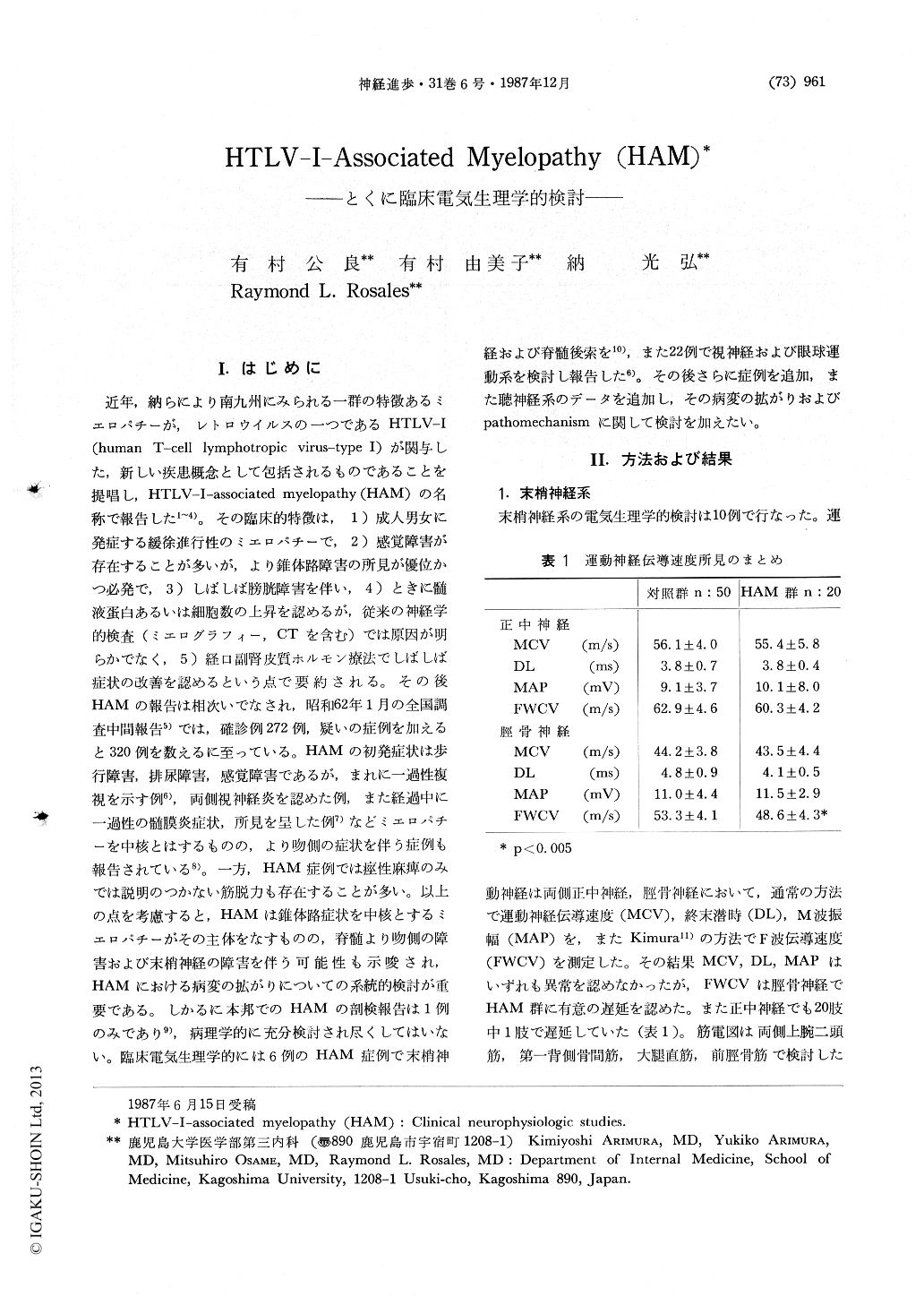Japanese
English
- 有料閲覧
- Abstract 文献概要
- 1ページ目 Look Inside
I.はじめに
近年,納らにより南九州にみられる一群の特徴あるミエロパチーが,レトロウイルスの一つであるHTLV-I(human T-cell lymphotropic virus-type I)が関与した,新しい疾患概念として包括されるものであることを提唱し,HTLV-I-associated myelopathy(HAM)の名称で報告した1〜4)。その臨床的特徴は,1)成人男女に発症する緩徐進行性のミエロパチーで,2)感覚障害が存在することが多いが,より錐体路障害の所見が優位かつ必発で,3)しばしば膀胱障害を伴い,4)ときに髄液蛋白あるいは細胞数の上昇を認めるが,従来の神経学的検査(ミエログラフィー,CTを含む)では原因が明らかでなく,5)経口副腎皮質ホルモン療法でしばしば症状の改善を認めるという点で要約される。その後HAMの報告は相次いでなされ,昭和62年1月の全国調査中間報告5)では,確診例272例,疑いの症例を加えると320例を数えるに至っている。HAMの初発症状は歩行障害,排尿障害,感覚障害であるが,まれに一過性複視を示す例6),両側視神経炎を認めた例,また経過中に一過性の髄膜炎症状,所見を呈した例7)などミエロパチーを中核とはするものの,より吻側の症状を伴う症例も報告されている8)。一方,HAM症例では痙性麻痺のみでは説明のつかない筋脱力も存在することが多い。
Since the recognition of HAM as a new clinical entity, several new cases have been diagnosed throughout Japan. The characteristic features consist of a slowly evolving but progressive course, prominent pyramidal tract signs as against the mild sensory and sphincteric disturbances. The serum and the cerebrospinal fluid show elevated titers of antibody to HTLV-I.
Perhaps short of pathologic studies in HAM, electrophysiologic studies have potentials of assessing lesion distribution and underlying pathomechanisms. can occur. Short latency somatosensory evoked potentials (SSEP) in median and tibial nerve stimulation did not likewise show abnormalities in the peripheral conductions. However, central conductions, thus the Goll's tract, revealed significant changes. Assessment of regions above the spinal cord, using brainstem auditory evoked potentials (BAEP), visual evoked potentials (VEP) and electrooculography (EOG), suggest that lesions can also spread toward these areas especially in clinically severe cases of HAM. The high frequency of EOG abnormalities in the absence of clinical findings, including the only abnormal case (who also had no brainstem and visual disturbances) in both BAEP and VEP, demonstrates existence of subclinical lesions.

Copyright © 1987, Igaku-Shoin Ltd. All rights reserved.


